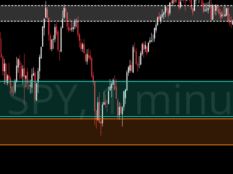Base Metals vs Precious Metals
I’m Meta Matt, Director of Education and welcome to PB University LITE! This is a 50 Class Trading 101 Series geared towards both new and veteran traders alike! We go over everything from Trading Psychology, Technical Analysis, and Options Trading to Commodity Trading, Forex, and more!! This 50 Class series is not designed be taken in order, it is instead designed for traders to browse and pick which classes interest them. I will include the list of classes at the bottom of this page.
Start Trading With Webull: Free Stock Shares
Custom Trading Indicator DISCOUNT: Try StocksBuddy Today
Get A Trading Coach, Premium Alerts, Education, and Community:
1 Month Membership
90 Days (Save 10% Per Month)
1 Year (Save $279)
Base (Common) Metals
Copper, Aluminum, Zinc, Nickel, Lead, and Tin
- Common Metals that are widely used in various industrial applications
- Often used in the production of infrastructure (buildings, roads, power supplies, machinery, everyday items.)
- Infrastructure Spending can be used by investors to gauge if prices will go up/down.
- As economies grow and construction increases, demand for copper, aluminum, and zinc tends to rise.
Precious Metals
Gold, Silver, Platinum and Palladium
- Less abundant in the earth's crust than Base Metals
- Typically possess desirable qualities such as: corrosion resistance, high melting point, able to be deformed/bent/stretched/hammered without breaking or shattering
- Used in jewelry, electronics, catalytic converters, and other high-tech applications.
- Store of Value
Precious Metals Store of Value
- Often used as a hedge against factors like inflation.
- Looked upon as a “Safe Haven” investment due to having historically retained purchasing power over time
- Inverse Relationship with the US Dollar.
- Tangible Assets: Uses in Jewelry, Electronics, and Industrial Applications. Intrinsic Value.
- Limited Supply compared to other commodities
- Accepted across the globe as a reliable store of wealth
- Inverse Relationship with Interest Rates
With Base Metals we look towards Construction and Infrastructure growth.
What to look for when trading Precious Metals…?
- Monetary Policies
- Mining Production
- Industrial Demand in Automotive Production (Platinum and Palladium)

PB University LITE Class List
1) Trading Terminology
2) Stock Market Indices
3) Common, Preferred, and Penny Stocks
4) Diversification of Assets
5) Fundamental Analysis Made Easy
6) Technical Analysis Made Easy
7) Risk Management In The Market
8) Portfolio Management
9) How To Follow Market News
10) Trading Psychology
11) Options Explained
12) The Greeks In Options Trading
13) How To Short Sell Options
14) Covered CALLS
15) Spread Trading
16) Online Brokers for Options Trading
17) Implied Volatility Calculators & Tools
18) Protective PUTS
19) Iron Condors
20) Straddles
21) Reading Level 2
22) Taxes
23) Trading Psychology Techniques
24) The Art Of Trading
25) Becoming A Jedi In The Stock Market
26) Futures Trading Explained
27) Commodity Trading 101
28) Regulatory Environments
29) How To Become A Millionaire
30) $100K In 100 Days
31) Wash Sale Rule
32) Behavioral Finance Part 1
33) Behavioral Finance Part 2
34) 5 Charting Indicators
35) Fair Value Gap
36) Insider Trading and Market Manipulation
37) Stock Chart Types
38) Moving Averages 101
39) Base vs Precious Metals
40) Electricity Trading 101
41) Trading Brokers 101
42) 5 Trading Strategies
43) 85% Trading Rule
44) Are Win Rates A Scam?
45) Futures Trading 101
46) ATR Indicator Strategy With The Greeks
47) MACD Indicator 101
48) Bollinger Bands Indicator 101
49) Wedges, Triangles, Flags and Pennants
50) RSI Divergence 101



